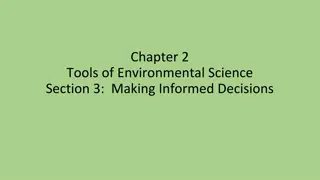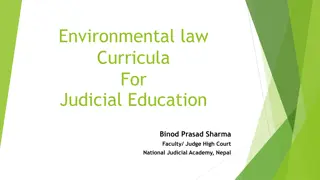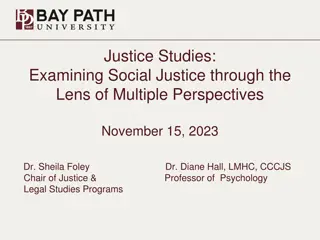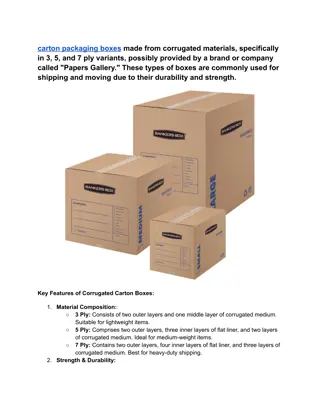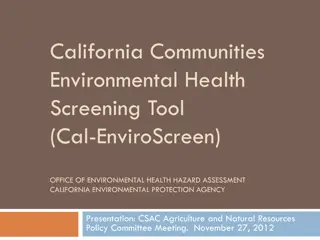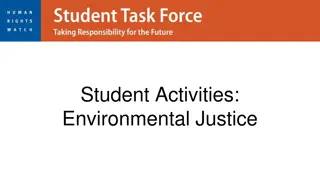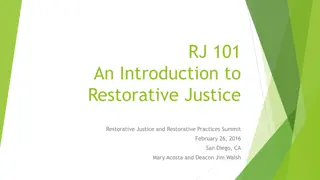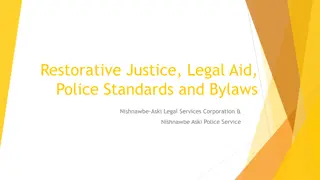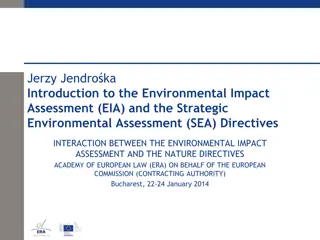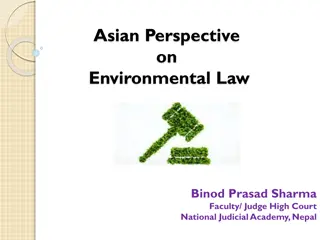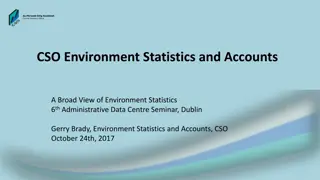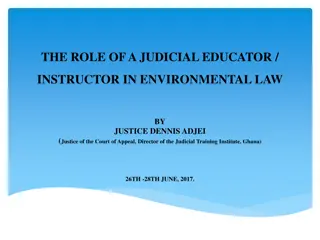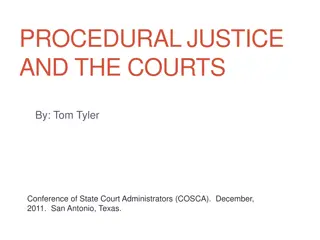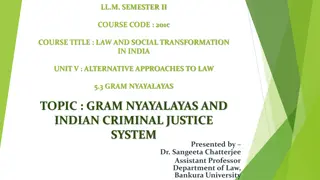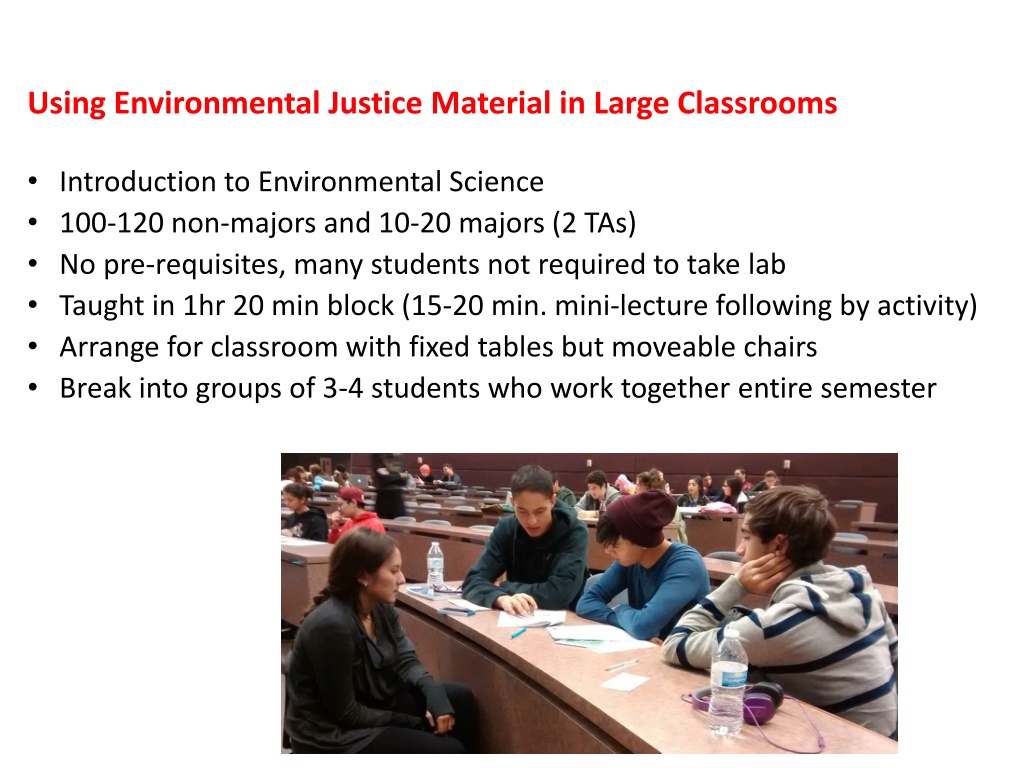
Using Environmental Justice Materials in Large Classroom Settings
Explore the successful integration of Environmental Justice (EJ) materials in a large classroom environment teaching Introduction to Environmental Science to non-majors and majors. Discover student engagement, results, and connections made to real-world issues like water injustice in El Paso and Mexico.
Download Presentation

Please find below an Image/Link to download the presentation.
The content on the website is provided AS IS for your information and personal use only. It may not be sold, licensed, or shared on other websites without obtaining consent from the author. Download presentation by click this link. If you encounter any issues during the download, it is possible that the publisher has removed the file from their server.
E N D
Presentation Transcript
Using Environmental Justice Material in Large Classrooms Introduction to Environmental Science 100-120 non-majors and 10-20 majors (2 TAs) No pre-requisites, many students not required to take lab Taught in 1hr 20 min block (15-20 min. mini-lecture following by activity) Arrange for classroom with fixed tables but moveable chairs Break into groups of 3-4 students who work together entire semester
Materials Used (over 2 week period) Did not use Google Earth in class due to class size and wifi bandwidth problems Unit 1 (Introduction to EJ), presentation/reflection (1.2, 1.3, 1.4*) in 30 minutes (prior to an exam) Units 2 & 3 (Hydrologic Cycle, Surface Water) assign water footprint as homework, students complete 2.1, 2.2, 3.2, 3.3, 3.4* in class Unit 5 (Love Canal) assign video and timeline as homework, complete 5.1, 5.2, 5.3 in class, students have especially difficult time with calculations in 5.3 Unit 6 (Groundwater) assign USGS water wells as homework, complete 6.1 and 6.2* in class *=modified to reflect El Paso issues
Main Results Out of 29 activities in class in 2015 (10 InTeGrate based), 52% liked InTeGrate activities best, with 50% of these considering EJ- freshwater materials the best Of particular interest was the water footprint activity (and its connection to water issues in the El Paso area) Over 1/3 students made direct connections between EJ movement and people of color like themselves They readily (>90%) could give examples of injustice in the El Paso community and they expressed particular concern with issues of EJ in Mexico




